“In Japanese haiku there are often flashes, or glimpses, and things appear like lightning, or as if in the light of a flare: epiphanies of a landscape”, writes Czeslaw Milosz in his introduction to a couple of haiku by Kikaku (1661 – 1707) and Issa (1763 – 1827).
Milosz’s introductions to each poem and each section in a book he edited called A Book of Luminous Things: An International Anthology of Poetry (Harcourt, Inc., 1996) are among the most pleasing aspects of the collection. “Epiphany” is the first section in the book. It’s a rather short section and yet to me, the most intriguing due to those privileged moments “when we intuitively grasp a deeper, more esenyos; reality hidden in things or persons.”
This is the haiku by Issa:
from the bough
floating down river,
insect song.
(Translated from the Japanese by Lucien Stryk and Takashi Ikemoto.)
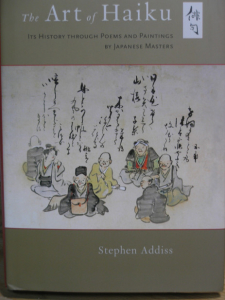 I’ve been reading about Issa in The Art of Haiku (Shambhala, 2012) by Stephen Addiss.
I’ve been reading about Issa in The Art of Haiku (Shambhala, 2012) by Stephen Addiss.
Issa was born in 1763 as Kobayashi Yataro to a farming family in Kashiwabara (Nagano Prefecture) described as a “village of heavy snow.” His history is told in a chapter divided into short paragraphs followed by his own haiku. Issa was “determined to become a wanderer much like Basho and took the name “Issa” as a later haiku explained:
spring returns –
Yataro has become
the poet-monk Issa.
“Views of Nature” is the title of one of the many sections in the chapter on Issa. Stephen Addiss writes that “Issa did not write standard views of nature, but rather noticed the individual moments that often inspire fine haiku.” In one poem “he noticed how liquids reflect.”
the spring sun remains
where there is water
at dusk
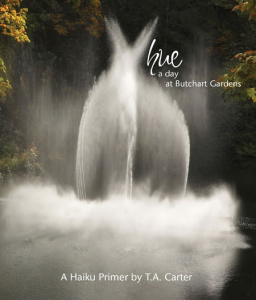 A charming little book that has come my way recently is Terry Ann Carter’s hue: a day at Butchart Gardens (Leaf Press, 2014). It’s a haiku primer by Terry Ann who is an internationally recognized haiku and tanka poet.
A charming little book that has come my way recently is Terry Ann Carter’s hue: a day at Butchart Gardens (Leaf Press, 2014). It’s a haiku primer by Terry Ann who is an internationally recognized haiku and tanka poet.
The delightful book features Terry Ann’s haiku accompanied by some tips on writing it. It’s all done in a light-hearted vein with a walk through Butchart Gardens in Saanich. Written as a letter to her friend Lucy the primer begins with some references to recommended articles followed by some “habits” to follow.
Among the seven habits are: “Compose your haiku in three lines (later, try two lines, or even one); and use seventeen syllables or less: first line (five syllables or less), second line (seven syllables or less) third line (five syllables or less).”
Whenever Terry Ann composes a haiku about bugs, insects, or small creatures, she says “I automatically think of the Japanese master poet Kobayashi Issa (1763 – 1827). What a sad life; yet, such beautiful poems about flies, cicadas, snails, frogs, fireflies.”
bees jitterbugging
in the crimson dahlia –
Butchart Gardens
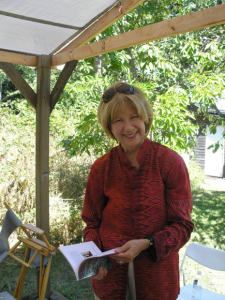 That’s Terry Ann’s haiku. I was pleased to meet her at the Hazelwood Writers Festival in Ladysmith recently. (We actually call the area Cedar as it’s an area of Nanaimo but the postal address is Ladysmith.)
That’s Terry Ann’s haiku. I was pleased to meet her at the Hazelwood Writers Festival in Ladysmith recently. (We actually call the area Cedar as it’s an area of Nanaimo but the postal address is Ladysmith.)
Terry Ann is the current president of Haiku Canada, teaches Japanese literary forms at Royal Roads University and lives in Victoria. I know our paths will cross again. If you happen to live in Victoria and would like to join a haiku group there (Haiku Arbutus) you can contact Terry Ann at terryanncarter3@gmail.com. I suppose you don’t actually have to live in Victoria, you just have to get there!
Nanaimo’s Poet Laureate, Naomi Beth Wakan, was the opening reader at the Hazelwood Writers Festival on August 10th and had her latest book with her: Poetry That Heals (Pacific-Rim Publishers, 2014. I’ll tell you about it in my next blog – or when I finish reading it.

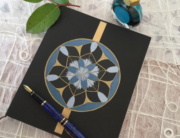

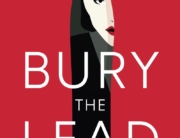
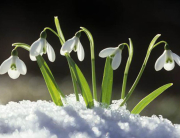
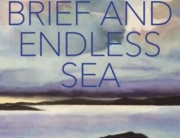
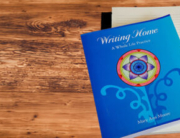


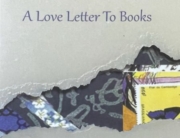
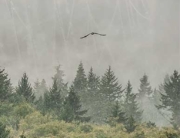
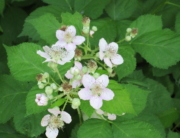
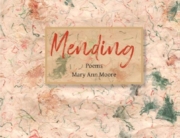
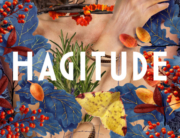
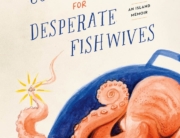

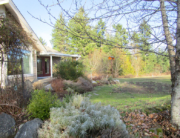
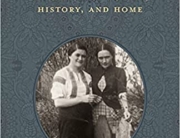
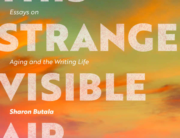
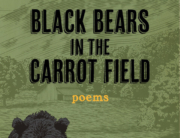
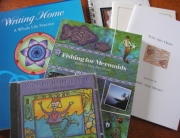
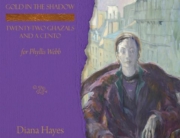
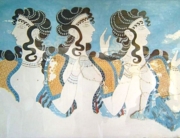

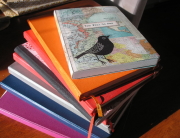
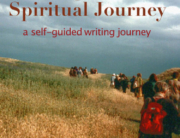
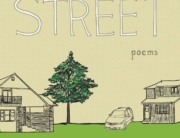
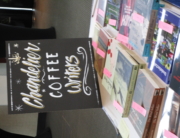


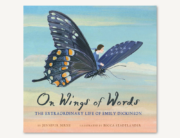

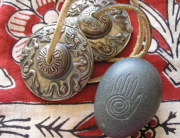
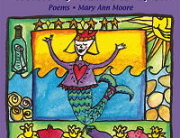
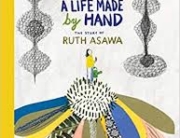
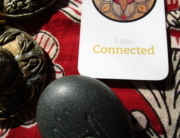
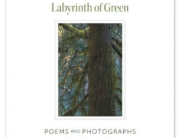
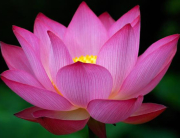
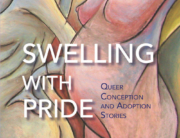
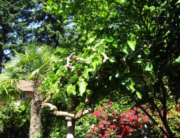
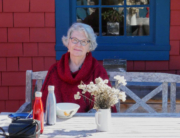
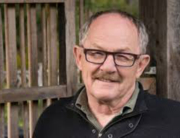
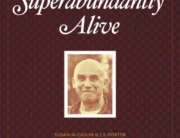
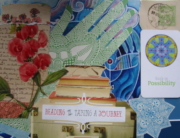
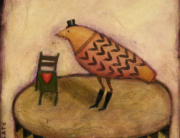
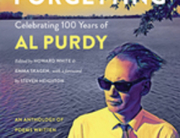
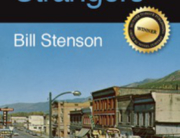

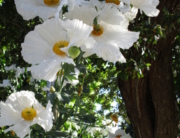
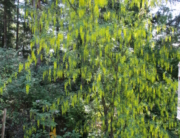
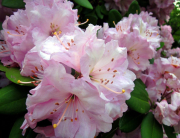
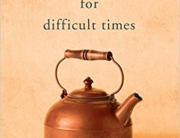
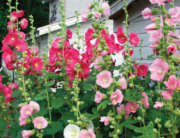
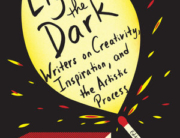

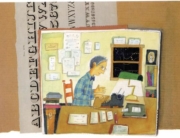

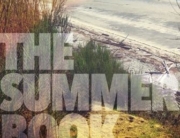
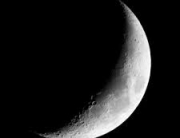
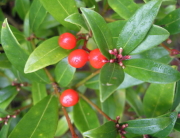
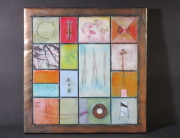
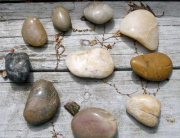
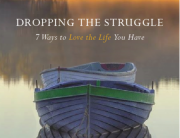
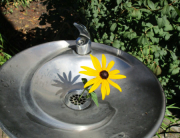
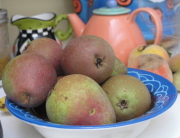
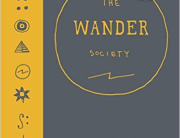
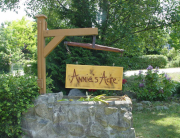

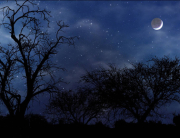
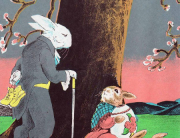
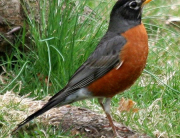
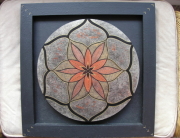
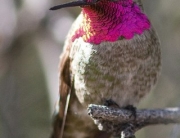
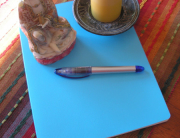


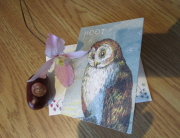
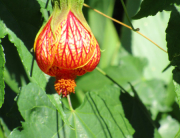
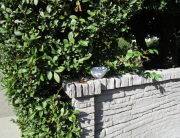
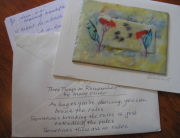
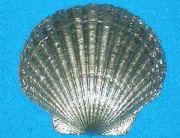
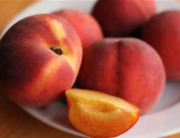
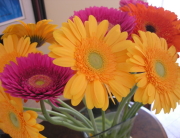

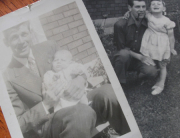
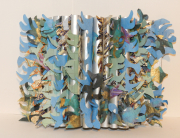

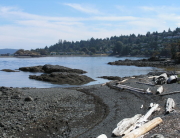
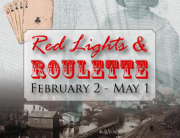

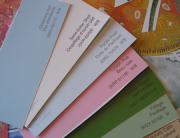
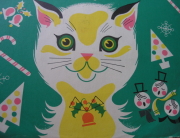


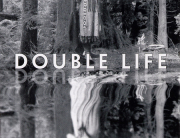
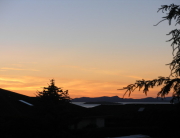
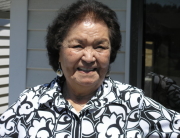
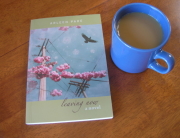
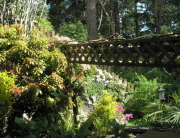
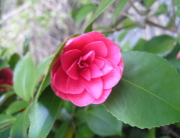
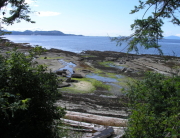
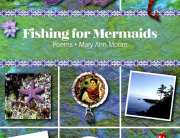
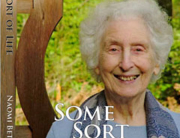
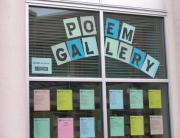
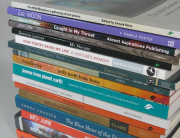
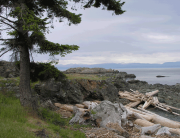
Lovely write-up mary Ann. Thank you for sharing. 🙂
Thank you Kim. I wonder why in “related posts” my previous haiku blog doesn’t come up. Curious.
Mary Ann, thank you for sharing your haiku & notes about haiku in such a thoughtful way. A friend of mine shared your blog with me as she knows I have a passion for haiku. I was about to write to you about haiku activities in your area, but then read your Aug. 17 post where you mentioned my friend, Terry Ann – someone you had already met through a poetry event. There are many haiku poets in your area, so I look forward to reading your next posts. So many connections…. between friends and poets and haiku. 🙂
Philomene, I look forward to writing about other haiku poets such as Naomi Wakan, Susan Constable, Winona Baker, and the fact that Sonja Arntzen, leading translator of Japanese classical texts, lives on Gabriola Island.
[…] I wrote an earlier blog called Ephiphanies of a Landscape, also about haiku, featuring Terry Ann Carter. You can read it here. […]